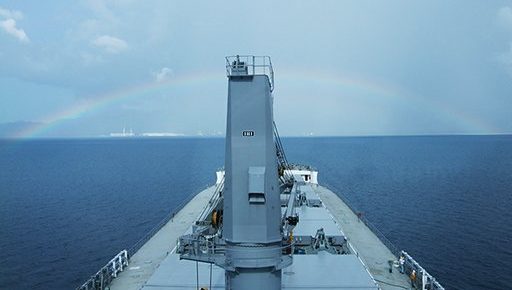Zero carbon vessels will require investment, technology – and community – readiness alignment

More than ever, decarbonisation of shipping will require substantial collaborative effort across maritime and energy stakeholders and beyond, writes Katharine Palmer from Lloyd’s Register.
Shipping’s transition to low and ultimately zero-carbon operations will continue to be driven by the relationship between the new fuel technologies evolution and the associated investment case for different vessel types. However, the industry must also consider the wider picture; specifically, the readiness and engagement of the entire stakeholder chain to adopt new fuels and technologies.
In producing our Techno-Economic Assessment of Zero-Carbon Fuels, Lloyd’s Register continues to work closely with the University Maritime Advisory Services (UMAS) to provide insights in all three areas – investment, technology and community readiness – to help the industry think more deeply about the necessary parts of the jigsaw that must fit together to deliver this pivotal transition.
The primary driver for the competitiveness of a zero-emission vessel when compared to a ship running on fossil fuels is clearly the fuel price. Clearly, it is very difficult to have absolute certainty about how these costs will evolve; however, an understanding of upper and lower price ranges and the total operations cost sensitivity to oil price changes mitigates any risks and exposure from an economic perspective.
Physical characteristics of fuels, such as their lower volumetric energy density, will mean changes to how we store and handle fuels onboard, which may in turn impact cargo-carrying capacity for some ship types, for example ammonia has half the density of LNG today, and therefore this will need to be built into design considerations early to ensure vessel designs are future proofed.
Applying a carbon price to the fuel means that the economic case is more viable earlier. For the fossil-based fuelled ships, this is less attractive, making zero-carbon fuels cheaper earlier, which could occur around 2040.
Overall, the TCO* for e-fuels is trending towards a continuous reduction every decade, whereas biomass derived fuels are not showing as consistent a trend. The trend shows that under a high-price scenario for biofuels the TCO increases, and under a low-price scenario the TCO either stays flat or slightly decreases.
As the investment case evolves over time a strong link between fuel production and price develops; subsequently, the way this evolves through the decades means that different zero-carbon fuel options are more economically viable in different decades and there is no “single solution” option that is more economically viable from today through to 2050.
Regardless of which zero-carbon fuels emerge as favoured from an economic perspective, from an onboard technology perspective, ZEVs are likely to be technologically possible in the next few years. However, to be confident about future investment requires confidence about the fuel supply chain, both in the availability of the quantities required and the land-based infrastructure in place to generate and support them.
From a technology readiness perspective, methanol, LNG and diesel are more mature than hydrogen and ammonia. There are rules and regulations currently in existence and there are vessels already using these fuels. From an onboard technology perspective, there are minimal differences, for example, between using bio-methanol, e-methanol or NG-methanol; the same applies to LNG.
Clearly ships, mechanical prime movers and potentially fuel cells will have to be modular and adaptable, this part of the challenge is considered manageable compared to ensuring the right fuel is ready, as well as the required supporting infrastructure on land is available. Therefore, the bulk of the technology challenge is in land infrastructure and in the supporting energy sector. And this will also call for flexibility to ensure resilience to supply chain impacts.
In addition to investment and technology readiness, community readiness is an exceptionally important driver of the necessary changes – what may be ready from an investment and technology perspective may not be ready from other stakeholders’ perspectives.
Future fuels will be expected to not only meet GHG emission criteria, but also other air pollutant standards (e.g. NOx and particulates), and contribute to broader sustainability criteria at regional and national levels. These broader criteria will increase acceptability to stakeholders as potential options for maritime applications given that they will neither have unintended impacts on local air quality, nor shift the problem to an increase in upstream emissions.
Once the world enters the recovery period post COVID19 and faces up to the inevitable financial challenges resulting from the pandemic, it will be even more important to ensure that the decarbonisation of shipping stays on the agenda and strong policy and implementation remains on track to set economic growth on the right trajectory. Irrespective of the price uncertainties, the market will not drive the transition to zero as the price spread across the different fuels is too large.
The choices made in the next decade are critical. This action relies on understanding the dynamics and interactions between technology, investment and community readiness within the range of ship types, sizes and operational profiles. Decarbonising the shipping sector requires substantial and collaborative effort across maritime and energy stakeholders and beyond into the wider system.
Looking into how the energy landscape is evolving in other sectors, we should draw similarities and understand how we can work together to meet one goal. Actions may include policy development, investing in innovation, undertaking research and development, energy efficiency and change in consumer behaviour.
